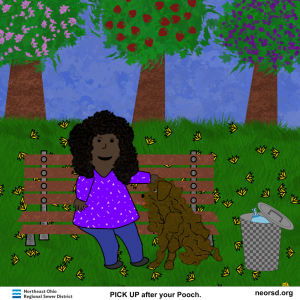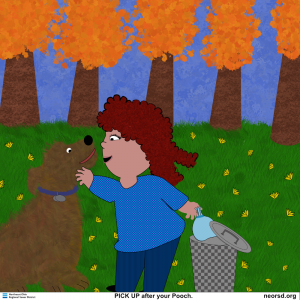As a child, when my parents would ask me where I wanted to go over the weekend, I wouldn’t say Legoland or the park or the beach. I would say, “The zoo!!” A zoo is a place where children get to learn about different animals, parents get to see the fascination in their child’s eyes, and animals are kept safe from the menacing wilderness. Not only is it a place for education, a zoo is also a place where people bond with each other while also having a good time. Whenever I went to the zoo, I’d admire the beauty of the flamingos, elephants, and lions, but I’d always wonder what are the most popular animals at the zoo, how they are cared for, and how the zoo, as a whole, contributes to lowering rates of extinction. Today, let’s address all these questions as we dive into how zoos truly care for our animals.
Zoos are essentially located all around the world. The United States itself has more than 2,800 zoos all across the nation (“The Best Zoos in America”). The most popular zoos are the San Diego Zoo, Lincoln Park Zoo, and St Louis Zoo, which attract 3.2 million, 3 million, and 2.9 million people annually, respectively (“The Best Zoos in America”). These zoos attract tourists and locals for a plethora of reasons, the main one being their exotic animals and how they are kept away from dangers they face in the wilderness. At zoos around the nation, the top three most popular animals that people come to see are African elephants, western lowland gorillas, and polar bears because of their beauty and stunning characteristics (O’Neill 2021).

Zoos housekeep for a variety of different animals, which brings up the question of how animals are cared for in these environments. Zoos have many different specialists such as nutritionists, veterinarian specialists, and trainers who all play an integral role in making sure the animals are healthy. These specialists consistently monitor the animals and assess them to ensure that they are both physically and psychologically fit (Kite 2019). The Wellington Zoo in New Zealand, for example, has outlined how exactly they care for their animals, which helps give insight as to what zoos do to ensure their animals’ safety. The Wellington Zoo has a veterinary team with high-tech equipment that allows them to give care to their animals while also having different surgery and recovery rooms for animals to recuperate. In addition, the Wellington Zoo has animal keepers that clean enclosures, do health checks, introduce new animals, and all in all, help the zoo be a safer place for animals to live. The most important aspect of taking care of animals for the Wellington Zoo is enrichment care, which is universal to most zoos. Enrichment care focuses on keeping animals’ brains and bodies active to make sure that their cognitive, behavioral, and physical senses are healthy (“Animal Care”). Altogether, zoos like the Wellington Zoo invest a lot of time and energy into making sure animals have an optimal living environment.
Not only do zoos help provide animals with a safe living space, but they also help protect endangered species and thus help lower extinction rates. The Association of Zoos and Aquariums (AZA) has many goals, one of the top ones being to protect endangered species through research, advocating for more protection, and establishing conservation initiatives. In fact, more than 230 top zoos and aquariums are working to achieve this goal which has led to more than 2,500 conservation projects taking place in over 100 countries worldwide yearly (“How Zoos and Aquariums Protect Endangered Species”). Zoos all over the world help contribute to keeping endangered species safe from extinction, which has been further documented in the 2021 study published in Conservation Letters that said more than 20 bird and nine mammal species have been rescued from extinction through conservation efforts since 1993 (Bove 2021). By providing endangered species a space to heal, receive care, and breed, zoos are helping promote species diversity and richness by making sure that the exotic animals we have in our world are taken care of.
Altogether, 6-year-old me would’ve never realized the amount of time, care, and effort that comes from zoos to keep animals safe on a 24-hour basis. The zoo is a world for not only human education but also for animal safekeeping so we can continue to live in a world with diverse species that give us more to learn about.
References:
- “Animal Care.” Zoo. Accessed November 28, 2021. https://wellingtonzoo.com/animals/animal-care/.
- “The Best Zoos in America.” USA Today, August 18, 2019. https://www.usatoday.com/picture-gallery/travel/destinations/2019/08/13/best-zoos-in-america/39946275/.
- Bove, Jennifer. “The Role of Zoos in Endangered Species Conservation.” Treehugger. Treehugger, July 28, 2021. https://www.treehugger.com/zoos-and-endangered-species-conservation-1182068.
- “How Zoos and Aquariums Protect Endangered Species.” Association of Zoos & Aquariums. Accessed November 28, 2021. https://www.aza.org/connect-stories/stories/how-do-zoos-help-animals?locale=en.
- Kite, Kelley. “How Zoos Should Take Care of Animals as They Age.” Faunalytics, August 21, 2019 https://faunalytics.org/how-zoos-should-take-care-of-animals-as-they-age/.
- O’Neill, Rebecca, and Rebecca O’Neill (484 Articles Published) . “Planet Zoo: 11 Most Popular, Animal Attractions and 4 Least Popular.” TheGamer, February 11, 2021. https://www.thegamer.com/planet-zoo-most-least-popular-animal-attractions/.























